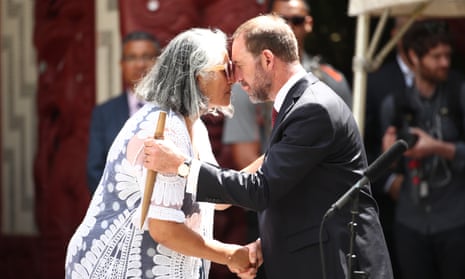After decades of neglect, inequality, and outright racism in New Zealand’s health system, a shift toward indigenous sovereignty and tino rangatiratanga in healthcare is long overdue. The Māori Health Authority that the government announced this week seems like a step in the right direction. But the devil will be in the details, as we wait to see if this will produce true change, or just more window dressing.
The failure of the health and disability system to serve Māori has been apparent for decades. A visit to the Ministry of Health website will yield report after report documenting the seven-year life expectancy gap between Māori and non-Māori, higher rates of cancer and other preventable illness, worse outcomes in care, and a myriad of other inequities. Being able to describe Māori health inequities is necessary. But ultimately, it’s insufficient.
In the 1980s, Māori organised ourselves to champion health sector changes – through national events like Hui Whakaoranga in 1984 and through the act of establishing Māori health and disability providers across the country. But the bulk of the health and disability system has always sat outside direct Māori influence, and certainly outside Māori decision-making. Over time, Māori health inequities have remained absolutely intact. An indigenous health body with true authority could start to change that.
Those inequities and poor Māori health outcomes are caused by a complex range of factors, including appalling access to housing, unequal incomes, and less access to social supports. That reality is sometimes used by health professionals and officials to deflect responsibility for the unfair differences that show up in health. Nevertheless, the Waitangi Tribunal in 2019 found that the way the health system has been run constituted a breach of te Tiriti o Waitangi – the foundational treaty between Māori and the crown that guarantees, among other things, Māori rights, sovereignty, and equal treatment. The tribunal ruled that the Crown had failed Māori over and over again. They had failed to properly fund services, failed to hold the health system accountable, and failed to ensure Māori had the necessary decision-making authority to design and deliver healthcare that worked.
The changes outlined on Wednesday have their roots in that landmark ruling. A year later, the government’s review of the health system saw much of the same evidence – but recommended only a mild version of change.
What the health minister, Andrew Little, and the associate health minister, Peeni Henare, have announced falls between these two. Whether it leans more toward the radical, once-in-a-lifetime change we need, or milder window dressing will depend on what happens next. A Māori health authority will be established over the next 12 months and partner with the Ministry of Health and a new national health service for New Zealand. It will have the ability to commission – or buy – kaupapa Māori health services and it will have a policy role of some kind. But the answers to the critical questions of who has power and money, and who is really going to be in charge are still vague.
The answers to those questions and to the really tough issues around a Māori Health Authority are best resolved by Māori. One of the big questions is the role of mana whenua, Māori communities, and whānau, or family groups, in the changes. Māori are not a monolith, and there needs to be a strong voice from different iwi, or tribal group, across the country. Ministers have said this will be addressed by evolving the current Māori partnership boards into something more powerful. Since these boards have had patchy – at best – support from their district health boards and are sometimes seen as a non-event by iwi because of this, “evolution” seems like an understatement.
Another thing to keep an eye on is the speed at which government is wanting the new system up and running. We need to have changes made decisively and quickly, but setting overly ambitious timelines can also increases the likelihood of taking the easiest choices and the path of least resistance. If speed is our number one goal, the hard decisions will be put off (and put off) and there will be another inquiry in a decade or so covering the exact same ground.
Still, I view the news of the Māori Health Authority with a sense of cautious optimism. I see a massive task ahead of us, and one where the possibility of agreeing to the easiest rather than best option remains a very real risk. The work has started, but the job is far from over.
Gabrielle Baker (Ngāpuhi) is a health policy expert and director at Baker Consulting. She works with organisations on pro-equity, anti-racist initiatives and developing a health and disability system that honours te Tiriti o Waitangi
